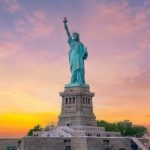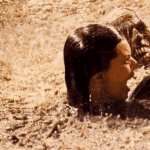 Creepy
Creepy  Creepy
Creepy  Technology
Technology 10 Scientific Breakthroughs of 2025 That’ll Change Everything
 Our World
Our World 10 Ways Icelandic Culture Makes Other Countries Look Boring
 Misconceptions
Misconceptions 10 Common Misconceptions About the Victorian Era
 Mysteries
Mysteries 10 Strange Unexplained Mysteries of 2025
 Miscellaneous
Miscellaneous 10 of History’s Most Bell-Ringing Finishing Moves
 History
History 10 Great Escapes That Ended Right Back in Captivity
 Weird Stuff
Weird Stuff 10 Fascinating Things You Might Not Know About Spiders
 Food
Food 10 Everyday Foods You Didn’t Know Were Invented by the U.S. Military
 History
History 10 Odd Things Colonial Americans Kept at Home
 Creepy
Creepy 10 More Representations of Death from Myth, Legend, and Folktale
 Technology
Technology 10 Scientific Breakthroughs of 2025 That’ll Change Everything
 Our World
Our World 10 Ways Icelandic Culture Makes Other Countries Look Boring
Who's Behind Listverse?

Jamie Frater
Head Editor
Jamie founded Listverse due to an insatiable desire to share fascinating, obscure, and bizarre facts. He has been a guest speaker on numerous national radio and television stations and is a five time published author.
More About Us Misconceptions
Misconceptions 10 Common Misconceptions About the Victorian Era
 Mysteries
Mysteries 10 Strange Unexplained Mysteries of 2025
 Miscellaneous
Miscellaneous 10 of History’s Most Bell-Ringing Finishing Moves
 History
History 10 Great Escapes That Ended Right Back in Captivity
 Weird Stuff
Weird Stuff 10 Fascinating Things You Might Not Know About Spiders
 Food
Food 10 Everyday Foods You Didn’t Know Were Invented by the U.S. Military
 History
History 10 Odd Things Colonial Americans Kept at Home
10 Not-so-Spooky Events That Also Happened on October 31
Halloween is known for costumes, decorations, and trick-or-treating, and with U.S. consumers spending billions on these items each year, perhaps rightfully so.
But beyond pumpkins and candy, October 31 has also marked key turning points in world history. From reformations and revolutions to scientific pardons and radio hoaxes, here are ten memorable events that happened on Halloween—none of which involve ghosts or ghouls.
Related: 10 Historical Events That Never Happened
10 Martin Luther Posts His Theses (1517)
German monk Martin Luther’s hopes of gaining a greater understanding of faith were dashed after witnessing what he saw as corruption during a visit to Rome in 1510 or 1511. Disillusioned, he later earned a doctorate in theology and concluded that salvation came from faith in God—not from fear or rituals.
When Pope Leo X began selling indulgences to fund the construction of St. Peter’s Basilica, Luther could no longer stay silent. On October 31, 1517, he nailed his Ninety-Five Theses to the door of the Wittenberg Castle Church, outlining his objections to Church practices. The theses spread rapidly through Europe thanks to the printing press, sparking the Protestant Reformation.
Though Luther was excommunicated and forced into hiding, his ideas reshaped Christianity, literacy, and individual thought across Europe. Today, many Lutherans still commemorate October 31 as Reformation Day.[1]
9 George Washington Chosen to Deliver a Message to the French (1753)
On October 31, 1753, 21-year-old Major George Washington was tasked by Virginia’s governor, Robert Dinwiddie, to deliver a message to the French, ordering them to vacate forts in the Ohio River Valley. This bold diplomatic mission would shape his early reputation.
The young officer braved freezing rain and snow on the journey to the French stronghold at Fort Le Boeuf, where he presented the order. The French politely refused to withdraw. Washington’s perilous return trek, during which he nearly drowned and endured subzero temperatures without shelter, earned him regional fame.
His detailed journal of the expedition was later published in London, giving him international recognition and helping cement his reputation for bravery and leadership. Within a year, tensions he helped uncover would erupt into the French and Indian War—his first taste of military command.[2]
8 Philadelphia Newspaper Ceases Publication (1765)
In 1765, the British Parliament passed the Stamp Act, requiring colonists to pay taxes on all printed materials, from pamphlets to newspapers. Outraged printers across the colonies protested the decree, viewing it as an assault on free speech.
Among them was William Bradford, publisher of the Philadelphia-based Pennsylvania Journal and Weekly Advertiser. Rather than pay the tax, Bradford defiantly shut down his paper on October 31, 1765—one day before the act was to take effect. His final issue bore an image of a skull and crossbones and the words “EXPIRING: In Hopes of a Resurrection to Life Again.”
Bradford’s act of defiance became a rallying cry for resistance. When the Stamp Act was repealed a few months later, he resumed publication, giving voice to a generation of revolutionary writers—including Thomas Paine, whose pamphlet Common Sense would later help spark independence.[3]
7 Napoleon’s Army Wins Near Hanau (1813)
After his crushing defeat at Leipzig, Napoleon’s exhausted army was retreating toward France when Bavarian General Karl Philipp von Wrede attempted to block his path near Hanau, Germany. Unfortunately for Wrede, his troops were split on both sides of the Kinzig River—a strategic blunder Napoleon quickly exploited.
The two-day battle, fought October 30–31, 1813, was fierce. Cannon fire thundered through the forests as Napoleon’s veterans pushed Wrede’s army back across the river. By the time the fighting ended, thousands were dead or wounded on both sides, but the road to France lay open.
Though Hanau was not a major strategic victory, it allowed Napoleon to retreat safely and regroup his remaining forces for one final stand. It was, in many ways, his last true triumph before his empire began to collapse for good.[4]
6 Tennessee Abolitionist Paper Ends Publication (1820)
Elihu Embree, a Quaker from Tennessee, used his printing press to fight slavery when few dared to speak out. In 1820, he founded The Emancipator, the first newspaper in the United States devoted entirely to the abolition of slavery.
Through fiery editorials, Embree condemned slaveholders and praised those who freed their enslaved workers. His monthly paper reached subscribers across several Southern states and inspired early abolitionist networks. But declining health soon took its toll. On October 31, 1820, he published his final issue, and weeks later, he succumbed to illness at just 38 years old.
Despite its brief run, The Emancipator laid the groundwork for future anti-slavery publications, spreading ideas that would help shape the movement decades later.[5]
5 Brigham Young Arrives in Nebraska (1847)
Though the Mormon Church is closely associated with Utah, the faith’s turning point came much earlier—and in a far colder place. On October 31, 1847, church leader Brigham Young and his followers arrived at Winter Quarters, Nebraska, after a grueling trek across the plains.
The settlement soon swelled to over 4,000 residents, serving as a vital staging ground for pioneers migrating west. Within months, the community constructed hundreds of log homes, shops, and the Kanesville Tabernacle—where Young was later elected President of the Church of Jesus Christ of Latter-day Saints.
For the faithful, Winter Quarters symbolized both hardship and hope. From this temporary refuge on the Missouri River, thousands of pioneers would eventually make their way to Utah’s Salt Lake Valley.[6]
4 Nevada Becomes a State (1864)
During the final days of the Civil War, President Abraham Lincoln urgently needed political support to ensure passage of the 13th Amendment, which would abolish slavery. So when Nevada applied for statehood, he made sure it was admitted quickly—just in time for the 1864 election.
On October 31, 1864, the “Silver State” officially joined the Union. Its admission telegram to Washington, sent from Carson City, was over 16,000 words long—the longest ever sent at the time. Nevada’s entry added crucial Republican votes for Lincoln’s reelection and for emancipation.
Named after the Spanish word for “snowy,” Nevada would later boom with silver mining and gambling, but its Halloween birthday remains one of the most politically significant in U.S. history.[7]
3 Lincoln Highway Association Dedication (1913)
Before Route 66 and the interstate system, America had the Lincoln Highway—the nation’s first transcontinental automobile road. On October 31, 1913, the Lincoln Highway Association formally dedicated the route, linking New York City to San Francisco across 3,000 miles and 13 states.
Built through public and private fundraising, the project aimed to make long-distance car travel possible at a time when paved roads were rare outside cities. Early motorists navigating the gravel and dirt tracks took up to a month to complete the journey.
The Lincoln Highway inspired tourism, small-town economies, and America’s fascination with road trips. It also laid the foundation for the U.S. Highway System that still connects the nation today.[8]
2 Orson Welles Explains the War of the Worlds Hoax (1938)
On October 30, 1938, millions of Americans tuned into CBS Radio expecting a Halloween program—and instead heard what sounded like live news bulletins describing an alien invasion in New Jersey. The broadcast, an adaptation of H.G. Wells’s The War of the Worlds, was directed by 23-year-old Orson Welles.
While reports of mass hysteria were likely exaggerated, hundreds of listeners did panic, calling police and newspapers to verify the story. The next day, October 31, Welles held a press conference, expressing shock at the reaction and insisting the broadcast was meant purely as entertainment.
The incident made Welles an overnight sensation and highlighted the growing influence of radio in shaping public perception—a lesson still relevant in today’s media landscape.[9]
1 Galileo Receives Papal Pardon (1992)
Italian astronomer Galileo Galilei had long clashed with the Catholic Church for supporting the heliocentric theory—that the Earth revolves around the Sun. His 17th-century defense of science over doctrine earned him condemnation and years of house arrest.
Centuries later, Pope John Paul II commissioned a special council to reexamine Galileo’s case. After 13 years of study, the Vatican acknowledged what the scientific world already knew: Galileo had been right all along.
On October 31, 1992—376 years after the trial—the Pope formally closed the case and issued an apology, declaring that Church officials of the time “failed to distinguish between faith and scientific inquiry.” It was a symbolic but powerful gesture of reconciliation between science and religion.[10]








